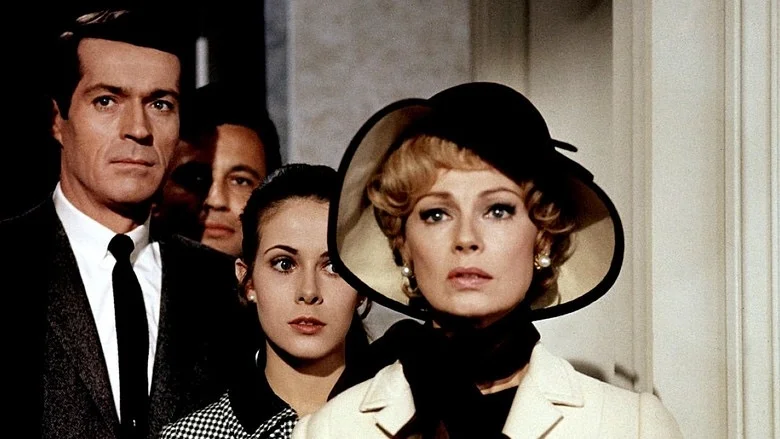Beginner’s Guide to Alfred Hitchcock: Dial M for Murder (1954)
In the 1950s, Hollywood went through a 3D craze with many films being produced with 3D technology. The technology utilized double-system projectors working side by side; with the 35mm resolution functioning with the two images from the projectors, audiences were treated to beautiful 3D imagery. Alfred Hitchcock was under contract with Warner Brothers and he tried to make a film called The Bramble Bush, about a man who unwittingly steals a wanted man’s passport. That film fell through, so Hitch took on Dial M for Murder and it was decided that it would be in 3D. The film was based on the hit British play Dial M for Murder by Frederick Knott, and featured Ray Milland, Grace Kelly, Robert Cummings, and John Williams.
When former tennis star Tony Wendice (Milland) discovers his wealthy wife Margot (Kelly) is having an affair with crime novelist Mark Halliday (Cummings), he plots her murder in order to secure her inheritance. Tony blackmails his former classmate turned criminal C.A. Swann (Anthony Dawson) into breaking into their apartment and killing Margot while she’s home alone. However, Tony’s perfect murder goes awry when Margot kills Swann in self-defense. As Chief Inspector Hubbard (Williams) investigates the death, Tony tries to get away with the attempted murder.
Alfred Hitchcock is strangely dismissive of Dial M for Murder. In the book based off his interview with French director Francois Truffaut, he spends only a few pages on the film. Hitchcock claims that there isn’t much to say about it. He was about to enter a contract with Paramount, with whom he’d do some of his best work, like Rear Window, Psycho, North by Northwest, and Vertigo. Perhaps he was itching to get the WB film done so he could move on. Hitchcock stayed faithful to the stage play, hardly stepping outside of the Wendices’ apartment. That was a conscious decision to keep the film claustrophobic.
Dial M for Murder is directed with precision and economy. The opening few minutes are brilliant, silent storytelling, with Hitchcock directing the audience to understand backstory without exposition. Hitchcock also employs low angles to great effect. He built a pit on set in order to achieve some of the shots; his high angles serve as a stark contrast. The murder attempt is masterful in its slow burn suspense, until it erupts in chaotic violence. Dial M is very talky at times, but Hitch’s camerawork (aided by cinematographer Robert Burks) makes the film very suspenseful. Dial M for Murder is one of the few films where the police officer is shown as competent. While Margot is arrested, Hubbard suspects that something is amiss and he’s the one to solve the case, and how he does it is really fun to behold.
Ray Milland’s performance is also what holds the movie together. He plays a very droll, sophisticated, and heartless villain. The way he twists Knott’s dialogue is so entertaining and the character itself is always on his toes. He’s always thinking and struggles to come up with the right answer as his plan spirals out of control. Grace Kelly plays her part well, though she doesn’t get to be charismatic. Her empathetic performance is the heart of the movie. Cummings, Williams, and Dawson provide solid support and their characters are interesting to watch. Williams and Dawson reprise their roles from the stage production, for which Williams won a Tony Award.
Despite all of the hype about Hitchcock doing 3D, the film is hardly shown in the format. For one thing, projecting 3D films and maintaining the film strip were hard to do at the time nationwide. The other issue was that the film couldn’t be released while the play was still running. By time the film came out, the 3D craze had faded and the 2D version was predominantly shown. Hitchcock himself predicted this, but he tried to make the film pop in both formats. The 3D version has been shown a few times over the years; I saw it at the Film Forum in NYC in 2011. The film looked amazing and the 3D really worked wonders. With all respect to Hitchcock, I think Dial M for Murder is really exciting and quite unique in its filmmaking.















